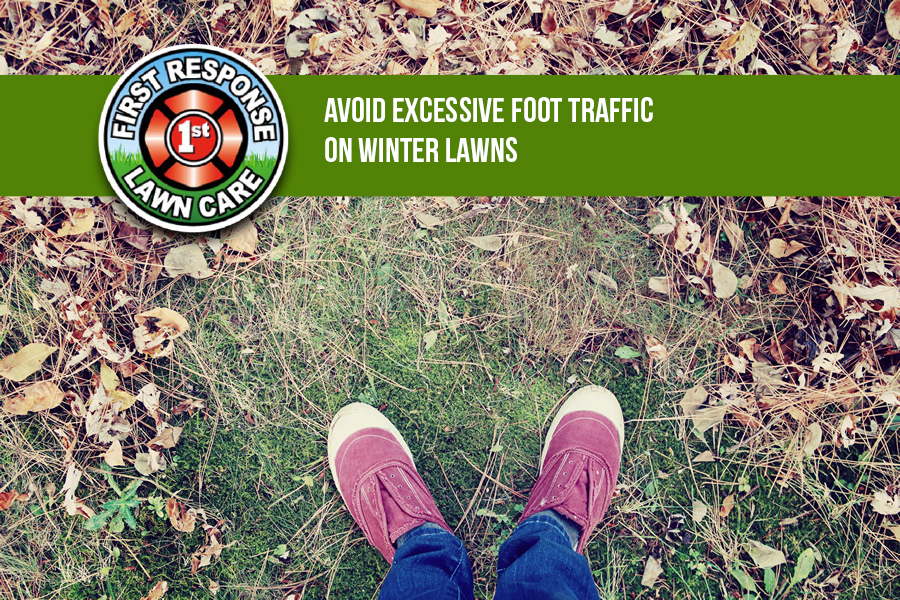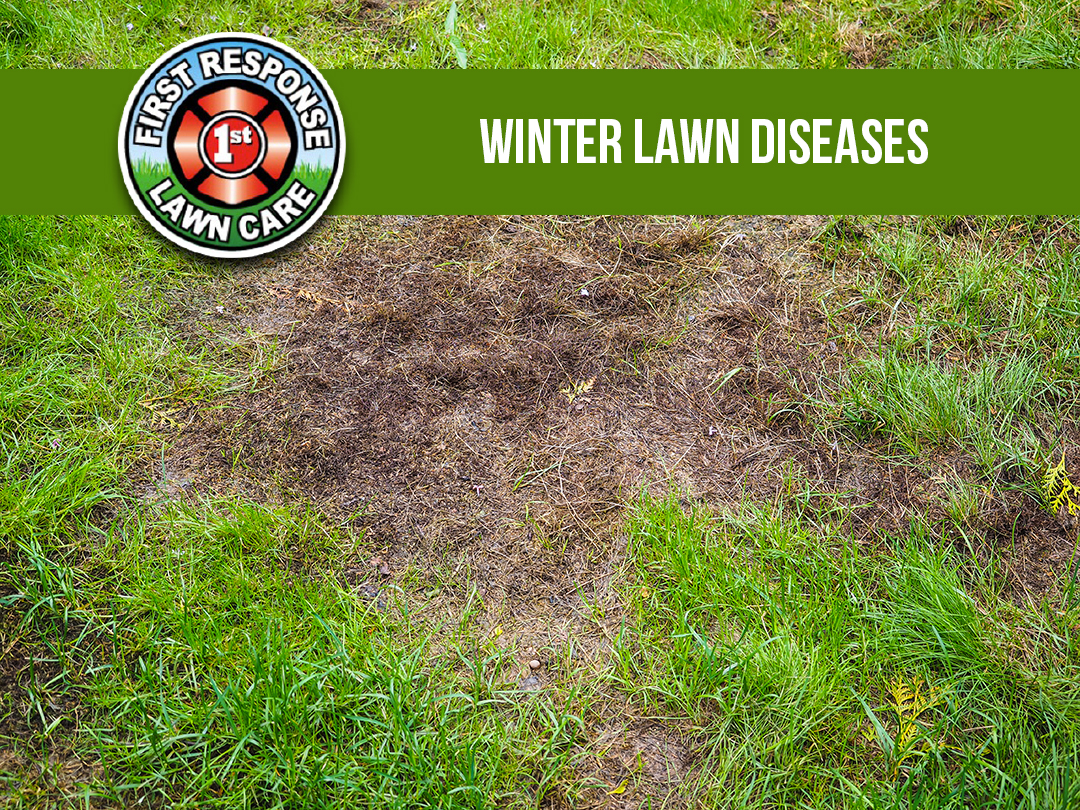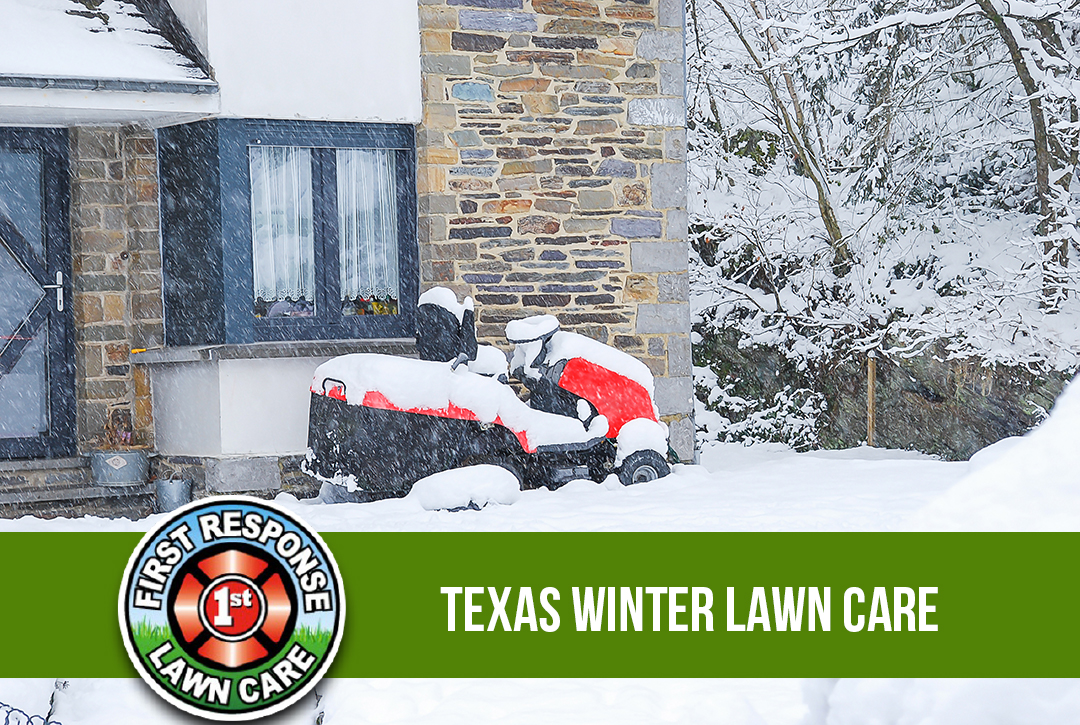
by admin | Mar 1, 2019 | Winterizing Your Lawn
It’s a good idea to avoid excessive foot traffic on winter lawns this time of year. When grass is brown and short, it’s easy to forget that too much foot traffic can actually damage it. Even though turf grasses are normally sturdy and resilient, too much wear and tear will make it hard for them to recover and worn walking paths may form.
Your lawn can easily become a convenient option over cement or walkways. To encourage guests from unnecessarily walking on your lawn, make sure that your sidewalks or driveways are kept clear in the winter months.
If you neglect winter lawn care
If you don’t take care of your lawn in the winter, no amount of spring lawn maintenance can totally reverse the neglect. Without care, your turfgrass roots are more likely to die, resulting in a dead lawn that’s not only unappealing but unhealthy for your lawn. When this happens, reseeding and replanting of turf grass will be necessary and nursing your lawn back to full health will take time and money.
If you’re worried about your lawn this winter, let a professional lawn specialist at First Response Lawn Care evaluate your lawn and assess its needs. Now is the perfect time to sign up for our 7 step lawn care and weed control program that’ll keep your lawn healthy this winter and all year long. Contact us today for a complimentary quote and inspection of your property and we’ll get working to give your lawn the help it needs.

by admin | Feb 22, 2019 | Winterizing Your Lawn
Ahhhhh raking winter leaves, an age-old tradition that most could live without for sure. Back when I was young, there was no shortage of leaves in our neighborhood and they always seemed to float to our yard. It was a chore, but read on because we have good news!
First Response Lawn Care will rake up leaf debris in your yard and bag it for you! Your flowerbeds and other landscaped areas need clean up too during the Texas winter months.
Get your yard cleaned from all the existing leaf piles or keep those falling leaves under control with our expert rake and bag lawn service. Keep your lawn grass and landscapes healthy by removing debris that could cause disease or give rodents a place to hide. If you have a ton of leaves or you have a bed of leaves that get wet, then you have a chance of growing mold, a fungal disease that can attack your grass.
When you are ready to say goodbye to those leaves, Call us and we’ll rake and bag those for you.
Questions? Contact First Response Lawn Care specialists by clicking the link below to ask about our expert services.
Contact First Response Lawn Care Today!

by admin | Feb 15, 2019 | Lawn Care 101, Lawn Diseases
Winter lawn diseases and what you need to know about them.
Severe damage can occur in lawns during the winter months. Sometimes patches of lawn become brown or bare during the winter and don’t return to green when spring comes around. For the most part, turf grasses are resilient and strong, though damage to grasses for Various reasons.
Cold Desiccation
Grasses will survive just about any temperature if they are blanketed with snow, but uncovered grasses in very cold conditions will continue to lose moisture and oxygen after the ground is frozen solid.
If the damage is minor, individual grasses may recover, or surrounding grass plants may fill in. With widespread damage, you likely will need to reseed or re-sod dead areas.
Snow Mold
When heavy snow falls over ground that is not yet cold, the moist conditions may foster a variety of fungal diseases collectively known as snow mold. In the spring when the snow melts, you will notice fuzzy or crusty patches, pink or gray in color, blanketing portions of the lawn.
Snow mold usually dies as sun and breezes dry out the lawn, but if the turf has been infected for a long time, the grass may die. Usually, though, the grasses will gradually recover. If the lawn still has debris from the previous year, rake this up to improve air circulation to the grass.
To prevent snow mold, make sure to de-thatch or aerate your lawn regularly, which will increase air circulation and prevent snow mold.
Crown Freeze
The crowns of turf grass can be killed if warm, moist weather is followed by a sudden freeze. This is most common in late winter and early spring, when unexpected frost occurs in warm climates.
Widespread damage requires reseeding or re-sodding. There is not much you can do to prevent crown freeze.
Voles (Field Mice)
Sometimes winter damage is caused by voles. The mouse-like pests average around six inches long, and they spend their winters tunneling beneath the snow or lawn debris, eating plant roots and keeping warm.
Re-seeding is usually the best option if the damage is not too severe. Otherwise re-sodding the damaged areas may be required. To keep voles at bay, remove dead grass and fallen leaves in the fall. Our fall or spring cleanup services might be right for you!
Questions? Contact First Response Lawn Care by clicking the link below to ask about our expert services in all these areas!
Contact First Response Lawn Care Today!

by admin | Feb 8, 2019 | Winterizing Your Lawn
Texas winter lawn care can be challenging. With its rain and freezing temperatures that can affect the lawn and will require the grass to be replaced if too much damage occurs. Winter in Texas may not be as long or severe as other states, but it can get cold. Homeowners must prepare their lawns for the cold bursts so that they are healthy and strong and ready for growing season.
Texas Winter Lawn Care Guide
Wondering how much work you need to put into your lawn in winter? The truth is, you don’t need to devote every moment to your lawn. But you want to pay it some attention if you want it to be green in the spring!
Clear Any Leaves and Debris
The debris and leaves can block out the sunlight, which can kill your grass. It is advisable to remove dead leaves on your yard so that you don’t wake up to a brown lawn come spring. Also, make sure you clear any debris, such as sticks, leaves, or other rubbish during the winter. These things can interfere with the grass receiving the proper nutrients, moisture, and air.
Winter Watering
Since Texas rarely gets snow, you should still water your lawn in the winter, especially if it’s been a couple of weeks without rain. Watering first thing in the morning is best because there is less evaporation and the water has a better chance of drying before night time, reducing instances of lawn diseases.
Know When to Apply Fertilizer
Fertilization is the most common way to make sure your lawn stays green and lush. The best time to apply fertilizer is right before the first freeze. Winter fertilization will give your lawn an increased amount of density and will allow it to fight off winter weeds.
Plant Winter Grasses
People in Texas often think of rye grass when they think of a winter grass. Planting rye grass will make your lawn look lusher and fuller as it grows in with your current grass.
Watch Your Weeds
Weeds can still be prevalent in the winter, so be sure that you pay close attention. You will improve the way your grass will grow when the spring comes around by actively removing weeds in the winter.
Luckily for our customers, we have the experience, the right tools and stock all the chemicals necessary to keep it looking its best so you don’t have to. Call us at (214) 701-7622 to talk to our friendly staff about your lawn care needs today! Or click the link below to check out our service offerings.

by admin | Feb 1, 2019 | Winter Garden
If you’ve ever wondered what to grow in winter? Take a look at 5 plants that do well through winter weather.
Is the thought of cold temperatures and falling snow is enough to make you look for a fireplace? While we think a lot of plants do too when winter comes, but some garden plants can actually defy the odds. Winter gardening doesn’t mean planting things in the snow. The idea of what to grow in winter might make you rethink what you plant in the garden throughout the year.
Herr are 5 suggestions for plants that do well so you can know what to grow in winter.
The camellia is almost synonymous with the cold winter season. This evergreen shrub thrives even in winter when few plants do giving life to a bare garden. Camellia is also a shade plant growing well in acidic soil. Watering these plants with rain is ideal.
How else are these dainty white flowers named besides their snow white colors but for their ability to seemingly grow in snow? They love the snow so much so forget about growing these plants in the warm south. Snowdrops are a shade loving plant too so you can add life and color in a shady spot in your garden.
You’ll find these well-loved classical flowers common in cottage gardens and for very good reasons. The flowers are just lovely in form and in their variety of colors. They’re hardy too and pretty long enduring some may last for a generation in a garden.
Depending on the variety of Heather and the hardiness zone in your areas, they can bloom all winter long. Give this plant a time to be established and you’ll find these plants blooming all through winter against the frost. Give your heather plant a trim in the summer to keep it healthy.
When a plant has legendary stories behind it then it must be amazing. Daphne really is when they’re widely known for their scented flowers and poisonous berries. Being a cold and drought tolerant plant, they are great for rock gardens and as a winter garden ornamental plant.
If you need help with Winter gardening ideas, call First Response Lawn Care at (214) 701-7622!. Or contact us using the link below!
Contact Us





